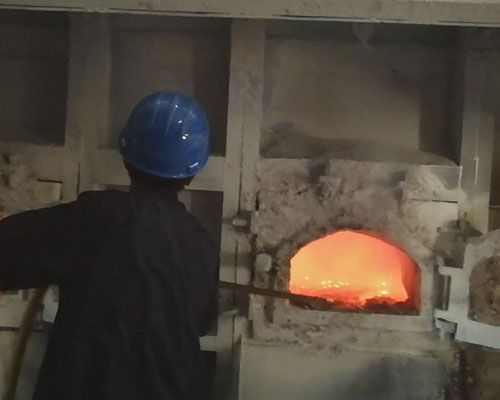The internal quality of aluminum ingots refers to both chemical composition and internal organization. Therefore, strictly controlling the impurity of aluminum ingots and preventing the formation of pores and shrinkage holes in aluminum ingots have become key points in the production process.
First of all, aluminum is an active metal with strong reducibility, and the surface layer is easily oxidized in the air. During the ingot production process, the high-temperature aluminum liquid flows out of the mixing furnace and flows into the casting mold through the casting launder. A layer of oxide film slag is formed on the surface and flows into the casting mold with the aluminum liquid. Impurity of Aluminum Ingots needs to be pulled out in time, otherwise it will forms slag on the surface of the aluminum ingot.
The reason for the slag accumulation is: First, the furnace eye and small flow eye of the mixing furnace are used for a long time and the aluminum slag adheres to the surroundings, resulting in irregular shapes. The molten aluminum cannot flow out smoothly, and the flow rate is too large, and turbulence is formed during the flow, resulting in excessive oxidation scum.

The mixing furnace continuously enters the aluminum for a long time without stirring the slag, resulting in more aluminum slag carried out in the aluminum liquid, and part of the oxidized slag is wrapped in the slagging process. Stir the slag regularly, maintain and clean the furnace eye and small flow eye of the mixing furnace, and keep the shape regular so that the aluminum liquid can flow out smoothly. Strengthen the slagging and flow adjustment operation process, and timely clean up the alumina slag at the pouring ladle to avoid the sudden increase and decrease of aluminum ingots.
Secondly, the temperature of the molten aluminum is too low, and the slag and aluminum cannot be completely separated. During the slagging process, the molten aluminum begins to solidify, causing the surface of the aluminum ingot to be uneven and prone to flash burrs. By increasing the temperature of the molten aluminum, for example, pour high-temperature molten aluminum into the furnace to prevent the formation of slag inclusions.

